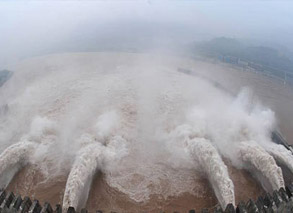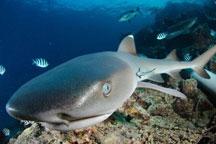Major battles
2009-11-18 16:04 BJT
Battle of Guandu
In the spring of 200, Yuan Shao, the most powerful warlord of the north, amassed more than 100,000 troops and marched from Ye on Xuchang. To defend against the invasion, Cao Cao placed 20,000 men at Guandu (官渡), a strategic landing point on the shore of the Yellow River which Yuan Shao's troops had to secure en route Xuchang.
With a few diversionary tactics, Cao Cao managed to disorient Yuan Shao's troops as well as kill two of Yuan Shao's most capable generals, Yan Liang and Wen Chou. The morale of Yuan Shao's troops suffered a further blow when Cao Cao launched a stealth attack on the former's food store, Wuchao. Many more of Yuan Shao's men surrendered, deserted or were killed during the ensuing battle. When Yuan Shao eventually retreated back to Ye in the winter of 201, he did so with little more than 800 light cavalry.
The Battle of Guandu shifted the balance of power in northern China. Yuan Shao died shortly after his retreat and his two sons were soon defeated by Cao Cao further in the northern regions of Liaodong. Since then, Cao Cao's dominance in the entirety of northern China was never seriously challenged. The battle has also been studied by military strategists ever since as a classic example of winning against an enemy with far superior numbers.
Battle of Red Cliffs
The Battle of Chibi (literally, "Red Cliffs") was another classic battle where the vastly outnumbered emerged as victor through strategy. In this battle, however, Cao Cao was on the losing end.
In the winter of 208, Liu Bei and Sun Quan – two warlords who later founded Shu and Wu respectively – formed their first coalition against the southward expansion of Cao Cao. The two sides confronted at the Red Cliffs (northwest of present day Chibi City, Hubei). Cao Cao boasted 830,000 men (historians believe the realistic number was around 220,000), while the Liu-Sun coalition at best had 50,000 troops.
However, Cao Cao's men, mostly from the north, were ill-suited to the southern climate and naval warfare, and thus entered the battle with a disadvantage. Furthermore, a plague that broke out undermined the strength of Cao Cao's army. The decision by Zhou Yu, military advisor to Sun Quan, to use fire also worked effectively against Cao Cao's vessels, which were chained together and thus allowed the fires to quickly spread. (Though in the novel Romance of the Three Kingdoms the chaining of the ships is attributed to Pang Tong, it is most likely that it was done by Cao Cao himself to stabilize the ships as his men were suffering from seasickness). A majority of Cao Cao's troops were either burned to death or drowned. Those who tried to retreat to the near bank were ambushed and annihilated by enemy skirmishers. Cao Cao himself barely escaped the encounter.
Editor: Zheng Limin | Source: wikipedia
 Mail
Mail Share
Share Print
Print


 Video
Video









 2009 China Central Television. All Rights Reserved
2009 China Central Television. All Rights Reserved